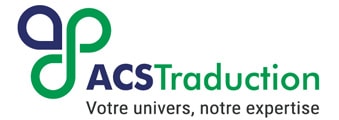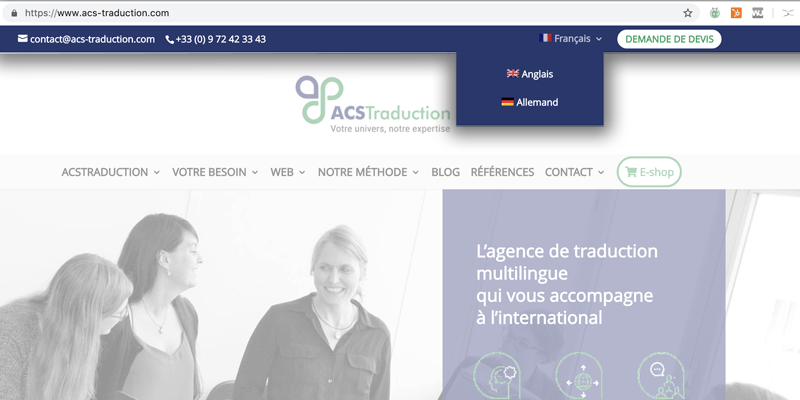By having a multilingual website, you will maximise the reach of your website and gain new business perspectives.
If you add an English version to your website you will reach more than 50 countries, and 1.5 billion more potential clients.
That’s not all. By providing new outlets for your products you will:
- benefit from the economic of scale: the cost per unit will decrease by the quantity
- be in a strong position in terms of suppliers
- develop your experience: by producing more product, you learn how to do it better, which leads to the decrease of complaints.
Now that you have been convinced of the importance of having your site translated multilingually, are you wondering where you should begin? In this article, we are going to show you how to easily create a multilingual WordPress website so that you can develop your business activity.
All the translation services of multilingual website translation, its advantages and disadvantages.
Use different domain names from the beginning
You can have one website per language, with the same name, but different domain names: that’s the extensions at the end of the domain, for example:
- .com
- .fr
- .co.uk
- .eu
- .org…
Advantages of using different domain names
You will be offering your potential clients an entire website specifically designed for them, catering to their cultural specificities. You will have a lot of freedom in terms of completely personalising your website.
Disadvantages of having multiple domain names
If you have a limited time frame, choose another option, because having multiple domains means managing several sites and several different referencing keywords.
Create different pages for each language on the same website
You can also do this from your main page and just add more pages to the website for each language. In order to do this you must click on the link, which is usually flag icons varying from country to country. Your URL will then look like this: examplebusiness.co.uk/es
Advantages of adding other pages to your official main website
Convenience and time-saving, those are the advantages of this method. You can even use the same graphic chart and add the chosen language.
Disadvantages
Lack of versatility and adaptability: You must keep the same graphic chart.
An example of a multilingually translated website
If your website is only in French, and isn’t able to support multilingual content, you must definitely have your website redesigned so that the structure of your website will be able to take this multilingual aspect into account. This is an example of a multilingual website:
www.un.orgBy having a multilingual website, you are giving your company an international image. You are showing your commitment to addressing multiple countries. And finally, everything being based on the same website, if one page becomes successful this will also reflect well on the other pages which will them improve your Search Engine Optimization.
Multilingual website translation and SEO
Once you have chosen how you are going to create your multilingual website, you will then have to be look at how Google uses your references. We will now look at how to ensure that Google uses the correct referencing for a website.
Content
You will have to hire a translator to work with the multilingual content, they must be native speakers in order to translate to the target language. Avoid machine translation, they will not translate your content effectively, you will risk tarnishing your company’s image.
A native translator will know exactly how to rewrite your content with the appropriate terminology for a technical translation or a marketing translation for example.
SEO
For a good SEO score, you must make sure that certain procedures are followed correctly:
- create a title tag
- write a meta-description: this will be the description of your website that Google will use to encourage internet users to click on it
- choose a URL to suit your business
All of these things need to be translated on a multilingual website. Once these translations are provided, Google will then know which language the page is in. To ensure that Google identifies the language correctly, it is also possible to clarify the language in the code on the main page by putting the language in the title tag. For example, for French the title tag would be <html lang=“fr“.
- Using hreflang title tags
These tags allow Google to pick up on the fact that the same content has been made available in three different languages, therefore avoiding being flagged for duplicate content by Google. Google does not like duplicated content and penalises sites that do so, by deleting them from Google’s search engines.
This title tag will therefore clarify to Google that your pages contain the same content available in different languages.
Creating a multilingual website will allow you to reach a whole new customer base. Our team at ACSTraduction is here to help you with the multilingual translation of your website. We are specialised in WordPress website translation and are in partnership with WPML. We will faithfully translate your content and adapt it to the target audiences.
Do not hesitate to come and talk to us about your projects!




